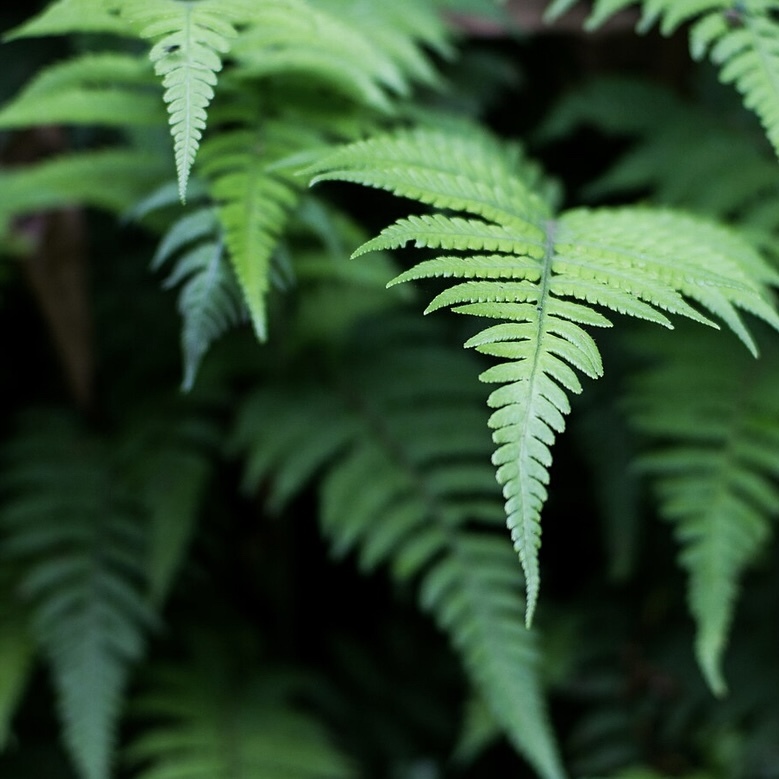Running bamboo is notoriously fast spreading and difficult to remove. What keeps its population balanced in the wild, and prevents it from crowding out the competition? I tried googling, but was inundated with gardening advice, horror stories, and assault / offensive gardening (some of the latter two presumably covering the same incident from both sides). My google-fu failed, I couldn’t really find any info about natural population controls of running bamboo in the thicket of tall tales and gardening advice.
Pandas, yo.
Guardians. Silent watchers. The unsung heroes.
Hungry muthafucka’s.
Kung fu pandas specifically.
Climate for one. At least where I’m at its too cold for bamboo to grow. Even in peak summer it’ll try to spread but its only a matter of time till the frost destroy it.
Now kudzu on the other hand. That shit is fucking up everything.
Kudzu is edible, which I’m guessing will come in handy for the South about halfway through the Trump administration.
It will become as American as Freedom fries.
That’s as an invasive species, but what about in its home climate?
Kudzu won’t grow where I live either. I’m not actually sure what the equivalent would be. Dandelions are the most unstoppable plant I can think of. Creeping bell flowers are maybe a close second.
US South? I swear to calculus like 2/3 of Atlanta is covered in kudzu, it’s nuts.
Yeah. It’s been wrecking the south. Can’t take a step without running into it.
Bamboo is kind of a tree in this case which is an area I know more about and I think many of these factors would apply to bamboo as well. First forests used to actually be more rare than today before humans came along. Europe and North America was covered by endless plains which were grazed by huge numbers of ruminant animals. Any tree that would try to grow would get grazed before it could grow so tall that the animals couldn’t eat it anymore. That’s why grass thrives in such an environment, it’s practically made to get grazed. Once cut it quickly grows back again. Once ancient humans came along and hunted most of the grazing animals extinct forest suddenly started spreading like crazy until almost the entirety of Europe was forested (which was then to a large extent deforested again after agriculture was invented). Grass simply can’t compete against trees for sunlight. Therefore I would expect less or none bamboo in areas with a huge grazing wild life populations. And I don’t mean animals that would eat the leaves, but the ones that would eat the new seedling.
Another thing that limits trees is moisture. In general the drier the climate the less beneficial it is to be a tree. That’s because deep roots are of no benefit in dry climates (but they are of huge benefit in humid climates during drought). Grass which generally have very shallow roots suck up all the rain before it can penetrate deep into the soil while deep tree roots never get any significant amount of water. Trees handle drought well but constant dryness is very detrimental for them. Dry areas also tend to have wild fires which also hamper trees. It’s simply better to be a grass (if moderately dry) or a cactus like plant if it’s extremely dry.
Another factor is soil conditions. Now I don’t know what soil bamboo prefers but I doubt it’s all soil. Soil can have huge impacts on things like pH and water availability. For example in far Northern Europe where I live you can tell that you are standing on sandy soil if all around you are spruces and pines. If you however see lots of leaf trees you are probably on a silt and clay soil. This is because conifers handle both dry and sour soil better than the local leaf trees which leads to more conifers on sand. Bamboo is probably also limited to a certain soil condition.
I hope that can at least help you develop more theories on why bamboo is not everywhere. Something important to remember is that just because a plant can grow well in a certain location doesn’t mean it will be found there. That’s because plants are always in fierce competition. I bet bamboo if intentionally planted and cared for could thrive in lots more places than its found naturally, but it just happens to not be the best plant in that location, meaning it’s outcompeted over long time scales.
Bamboo is not a kind of tree in the slightest. It is a kind of grass.
Trees are not a taxonomic group. It’s rather a description of characteristics the most important of which is having a woody trunk. For example there are tree legumes and non-tree legumes. A species of tree can therefore be more closely related to a non-tree than to other trees. However it’s totally true bamboo is not a tree. A grass could in theory however hit all the characteristics that are required to be tree and would then be considered as such, however no such grass happens to exist.
Are palm trees not a grass?
Palm trees are monocots and are therefore related to grasses, however they are not grasses themselves. Monocots are a really broad group though. Kinda like saying a certain animal is a mammal. Important distinction but still very broad.
Thanks! You’ve been the most detailed and helpful answer.
Thank you for this! Outstanding knowledge!
It is the same as other easily spreading plants. In their native habitats there are checks like diseases and predators. When you move them out of those habitats they can thrive at a new level because of the lack of those things.
Do they eat enough to kill it and the root system off? My understanding is if the roots survive they just keep spreading anyway?
Bamboo is monocarpic (true bamboo at least.). The huge clonal colony flowers once and dies, even below ground. The seeds that fall grow the next generation.
Bamboo species tend to all flower at the same time at the end of a years or decades long cycle. This bottlenecks how much it can spread clonally (underground roots) but gives it another method to spread.
Rats, mice, and other rodents eat the seeds, so there is some ecosystem regulation already
Places with good habitat but no native bamboos like Hawaii have really bad problems with colonies taking over huge areas
and thats why chickens lay eggs so often.
Not only diseases and predators keep them in check, there are also other plants that can effectively compete with them in their native range too
Leaves/shoots are where the energy comes from. If they get destroyed enough the root will die. Usually gardeners just aren’t that patient.
Pandas
They don’t call them Great Pandas for nothing
Bamboo rats feed on the underground roots of bamboo plants.
I’m not sure how much of an impact they make, but I can imagine they keep some of the growth in check.Soil composition, access to water, temperature/seasons, mountains, salt water, etc.
It needs nutrients, water and heat, without access to that it just doesn’t grow or spread fast, or at all. So it can’t cross the deserts on its own. It can’t grow above a certain sea level so it can’t cross the mountains(Pandas regularly have to climb down the mountains to get more access to bamboo)., it can’t use salt water, it can’t grow if it gets too cold for long periods of time and so on. It’s just fast growing in ideal enviroments.
The big horror stories in regards to gardning, isn’t that it throws seeds around and just grows everywhere. It’s that once one seed as taken root, it will start growing rhizomes. Which are similar to roots, except it’s a stem that grows horizontally underground. And famously bamboo stems will grow through most things very quickly. So if you don’t put up a proper root barrier, they will grow across the nearby lawns and start sprouting roots and and shoots. And from what I remember each shoot can grow more rhizomes, so you have to basically dig up the entire area or use strong plant killing agents and go without a plants in the area for a while.
You should read Semiosis, a sci-fi book about a planet with a lot of bamboo.
It’s an awesome book! I LOVE the angle the writer takes on alien life
The sequels expand on the premise in pretty interesting ways too.
I’m intrigued.
Well it doesn’t take over my yard because I got it all removed by a guy with a backhoe because it scared me. I like the way it looks but want some clumping bamboo not running bamboo, which had taken over the yard here when we bought our house. There’s still a little in one corner I just aggressively manage it. Comes over from the neighbors so it’s unavoidable.
There are bamboo forests, aren’t there? I’m sure that in its natural habitat it does have competition. Like kudzu. It’s just invasive here.
To add to the comments already posted; Some countries also have programs that combat invasive plant species. I once worked in such a program which removed invasive American trees in Europe.
I have bamboo on the back corner of my property (two different types) and let me tell you that it is a never-ending war to keep it as a fairly thin line (it’s basically my privacy fence). On the plus side, it’s really good at holding the ground together, supposedly, which helps living in earthquakeland.
The tiki bar industry.
probably because it needs to be artificially moved elsewhere, and unless it moves in large enough quantities it’s outcompeted
Himalayas and Siberia stops natural expansion, farmland essentially corner it, everywhere else it could grow is also already occupied
Climate for one. At least where I’m at its too cold for bamboo to grow. Even in peak summer it’ll try to spread but its only a matter of time till the frost destroy it.
Now kudzu on the other hand. That shit is fucking up everything.
Same question for morning glory, blackberries, and every other kind of wildly spreading thing.
Peppermint (mentha piperita): hold my tea!
Japanese knotweed (Reynoutria japonica): Amateurs!










